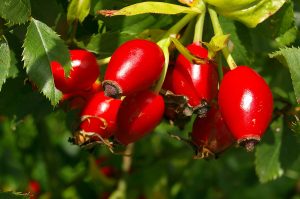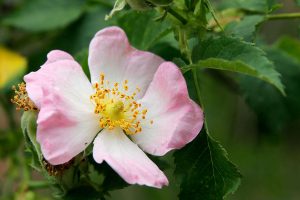Dogtooth Rose


The Dogtooth Rose is the most common spontaneous rose in Italy, found mostly in hedges and on the borders of woods. It is sometimes called the wild rose. It is spotted pink in colour and belongs to then rosacee family; genre Rose. The name seems to derive from its use in days gone by : The Dogtooth Rose was considered to be a specific remedy against dog bites which were infected with rabies, others believe because its thorns resemble a dog’s canine teeth.
TERRAIN
The best time to plant the Dogtooth Rose is without doubt during Autumn. When you proceed with planting the Dogtooth Rose you must pay attention to choosing the best position. In fact, the Dogtooth Rose prefers bright zones with direct sunlight and where the wind is not strong. Once planted the Dogtooth Rose tends to grow very fast, you should pay a lot of attention also to pruning and re-potting (which should always be done during the Winter using larger pots wherever possible). The soil to which it is most adapt should be soft and light, rich in organic substances and, above all, with an excellent drainage. Whether potted or in the garden it is sufficient to cultivate the Dogtooth Rose using a good topsoil. If potted instead it is a good idea to sprinkle the pot with a first layer, two fingers high, of expanding clay, then add a second layer of good quality topsoil average perlite or pumice stone.
In a natural environment you find the Dogtooth Rose in all types of soil, both acid and calcareous provided that there is a little of the under layer where it can grow.


FLORA AND FRUIT
The Dogtooth Rose flowers between May and June, the flowers are either pink or white and very rarely red, they can be as wide as 5cms, they grow singularly or in groups of two or three. The chalice, that is the most external of the floral wrapping is made up of five sepals with indented borders which are fringed. The corolla is formed by five petals. There are many yellow stamen.
USE AND HEALTH CONTENT
The Dogtooth Rose contains a lot of vitamin C; this type of rose presents many therapeutic properties; for example it is noted for its powers against infection and its ability to cure colds Its flowers and leaves are used above all in the preparation of herbal teas and infusions. It can be very useful too against dysentery, as a protective vessel, anti-inflammatory. Other curative attributes I has are as a tonic, a decongestant and anti-tumor. It can stimulate renal function favourable to eliminating toxins. It has a detoxifying effect and cleans the blood. Its petals and fruit can be used to prepare energizers which can help people who are debilitated, tired or very stressed. The seeds are used to prepare pesticides. In the kitchen you can use the fresh fruit to prepare delicious jams or dried to make liquors, whilst using the petals you can make an excellent honey. The use of the Dogtooth Rose is much noted in the cosmetic ambience, in fact this plant is very rich in beta-carotene and pro vitamin A, an anti-ageing agent, sunburn and anti wrinkle treatments. The petals are needed to produce eye-drops and is very effective when combined with distilled water can be used to cure reddened and sensitive skin, whilst the fresh fruit when blended you obtain a cream which can be used a lifting and toning facemask.
A few tips on the use of this wonderful and useful plant – for the preparation of herbal teas, put the dried leaves in a cup and add boiling water, after being strained it can be drunk two times a day; this preparation can be very useful in combating intestinal viruses which provoke cramps and dysentery. It can also be employed in dyeing. In the form of drops, it is useful to smokers because we know that nicotine renders no ingestion of Vitamin C. You can also prepare a herbal tea using the dried fruit in boiling water, leave it to brew for about ten minutes, strain it and drink about two cups a day. This herbal tea combats disease.
PRUNING AND CULTIVATION
The best time to prune the plant varies according to the climate. If we are in a cold and damp climate, you proceed with this operation at the beginning of Spring, if the climate is hot, it is opportune to prune at the end of Autumn or the beginning of Winter.
As like other roses the Dogtooth Rose should be pruned periodically using nectar cuts; better to cut the branches when young, the stronger are better able to sustain new buds, the older ones should only be pruned if dry or spoiled. It is advised to proceed with a slanting nectar cut but not too deep and not close to the bud.
